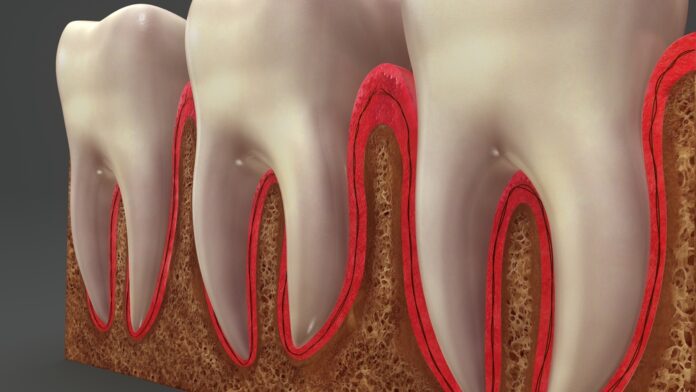Overview Of Periodontitis
Inflammation of Gums – Involving Bone is synonymous with Periodontitis. Periodontitis is inflammation and infection of the ligaments and bones that support the teeth.
Commonly Associated With
Pyorrhea – gum disease; Inflammation of gums – involving bone
Causes Of Periodontitis
Periodontitis occurs when inflammation or infection of the gums (gingivitis) occurs and is not treated. Infection and inflammation spread from the gums (gingiva) to the ligaments and bones that support the teeth. Loss of support causes the teeth to become loose and eventually fall out. Periodontitis is the primary cause of tooth loss in adults. This disorder is uncommon in young children, but it increases during the teen years.
Plaque and tartar build up at the base of the teeth. Inflammation from this buildup causes an abnormal “pocket,” or gap, to form between the gums and the teeth. This pocket then fills with more plaque, tartar, and bacteria. Soft tissue swelling traps the plaque in the pocket. Continued inflammation leads to damage of the tissues and bone surrounding the tooth. Because plaque contains bacteria, infection is likely, and a tooth abscess may also develop. This also increases the rate of bone destruction.
Symptoms Of Periodontitis
Symptoms of periodontitis include:
- Bad breath odor (halitosis)
- Gums that are bright red or reddish-purple
- Gums that look shiny
- Gums that bleed easily (when flossing or brushing)
- Gums that are tender when touched but are painless otherwise
- Loose teeth
- Swollen gums
- Gaps between the teeth and gums
- Shifting teeth
- Yellow, brown green, or white hard deposits on your teeth
- Tooth sensitivity
- Note: Early symptoms are similar to gingivitis (inflammation of the gums).
Exams & Tests
Your dentist will examine your mouth and teeth. Your gums will be soft, swollen, and reddish-purple. (Healthy gums are pink and firm.) You may have plaque and tartar at the base of your teeth, and the pockets in your gums may be enlarged. In most cases, the gums are painless or only mildly tender, unless a tooth abscess is also present. Your gums will be tender when checking your pockets with a probe. Your teeth may be loose and gums may be pulled back, exposing the base of your teeth.
Dental x-rays show the loss of supporting bone. They may also show tartar deposits under your gums.
Treatment Of Periodontitis
The goal of treatment is to reduce inflammation, remove pockets in your gums, and treat any underlying causes of gum disease.
Rough surfaces of teeth or dental appliances should be repaired.
Have your teeth cleaned thoroughly. This may involve the use of various tools to loosen and remove plaque and tartar from your teeth. Flossing and brushing is always needed to reduce your risk for gum disease, even after professional tooth cleaning. Your dentist or hygienist will show you how to brush and floss properly. You may benefit from medicines that are put directly on your gums and teeth. People with periodontitis should have a professional tooth cleaning every 3 months.
Surgery may be needed to:
- Open and clean deep pockets in your gums
- Build support for loose teeth
- Remove a tooth or teeth so that the problem doesn’t get worse and spread to nearby teeth



